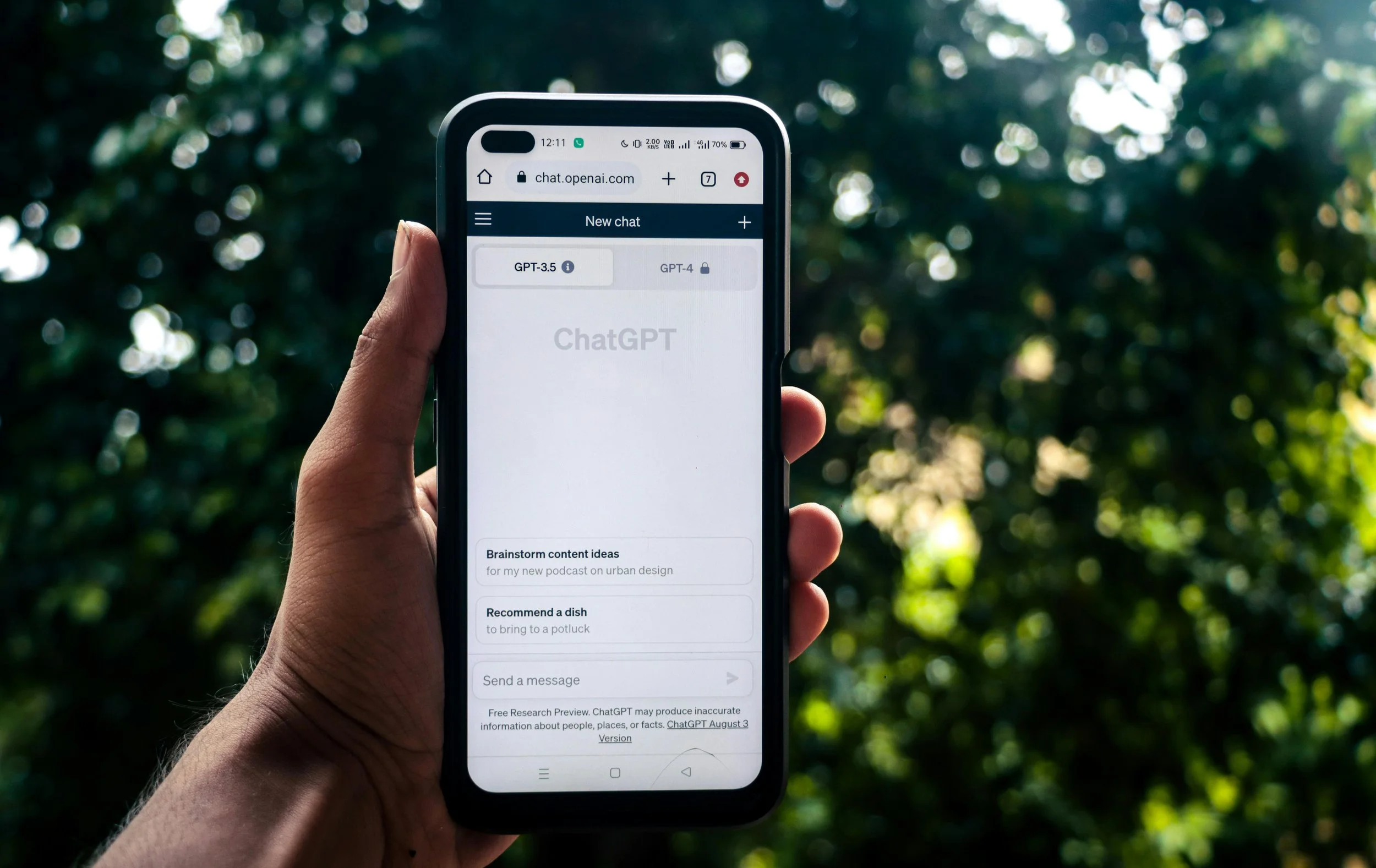Virtual Learning: The Good, The Bad, and The Innovative
/by Makayla Vasek, Communications Specialist
It has been over six months since universities across the U.S. released their faculty and students for the longest spring break in history. Although virtual learning is not a new concept, the COVID-19 pandemic demanded a global transition to online learning as a necessity rather than an option. This connection gives virtual learning a negative connotation when in many ways online courses are breaking education barriers and improving accessibility. So here, I want to reflect on the failures and successes of virtual learning that I’ve personally witnessed during this transitional time in education.
4 Challenges of Virtual Learning
A year ago, I was a sophomore college student running (literally) between classes, student organization meetings, and work shifts while trying to maintain a regular sleeping schedule and some semblance of a social life. Today, like students around the world, I continue to do all those things from the comfort of my home, or rather the discomfort of my computer screen. Classes are online. Work is online. Even many social events are hosted online. I try to remind myself that at least this remote format removes travel time from my schedule, but virtual learning introduces its own challenges. From my experience and the concerns of my peers, I’ve found four major costs of virtual learning that are discouraging for both faculty and students.
Loss of Routine
Students and professionals alike are dependent on school and work schedules to tell them when to wake up in the morning, when to eat, and when to go to sleep at night. Without the need to be anywhere physically, we can now wake up ten minutes before our first online commitment of the day. While I’ve never been one to complain about an extra hour of sleep, a lack of routine is not sustainable and gradually leads to more skipped classes and a general lack of motivation.
Screen Fatigue
If you log off your computer for the day with dry, stinging eyes, a headache, or feeling mentally drained, you could be experiencing screen fatigue. This exhaustion often prevents people from doing anything physically stimulating after the workday is done, creating an unhealthy cycle of overused mental capacity and neglected physical fitness.
Decreased Attention Spans
These days our computers hold all of our responsibilities in one place. At any given point, I have 3-5 tabs open on my laptop as I respond to emails, watch recorded lectures, monitor group chats, write essays, etc. Sitting in front of a computer with no one but ourselves to keep us accountable, we practice multitasking and passive listening, which means in many cases, we are working less efficiently and exhausting ourselves faster.
Lack of Socialization
Before everything turned virtual, our days were broken up with a greeting from a coworker, lunch with a colleague, or class with a friend. Now, those little moments of relationship are much more difficult to simulate virtually. If we don’t actively seek out those moments of social interaction, virtual learning becomes a very lonely pastime.
But students, professors, and study abroad administrators aren’t just adapting to virtual formats anymore; they are creating innovative experiences. The pandemic has not slowed down education or even eliminated study abroad options. It has simply changed our approach. In the face of adversity, we are learning how to advance our education and make meaningful connections through video calls, group chats, and online collaboration platforms. This era of technology and global connectivity is paving the way for new opportunities.
4 Steps to Create a Rewarding Virtual Experience
Through my involvement in online courses, attendance at virtual conferences and webinars, and participation in a virtual study abroad program, I’ve identified four crucial steps that distinguish a successful and enjoyable virtual experience from those that fall short and are easily forgotten.
Step #1: Establish Goals
In a virtual format, it is easier to become disengaged and even skip meetings that may seem unnecessary or lengthy. So, every interaction needs an end goal whether it is as simple as getting to know your team or as complex as presenting a project. Every assignment should similarly be purposeful; assigning “busy work” is no longer an appropriate option for professors.
Formerly, college courses disclosed a syllabus to students giving them a fluid outline of what the semester would hold. Today, virtual experiences should build on that foundation by including itineraries and calendar deadlines that set explicit expectations, identify a purpose, and encourage self-routine.
Step #2: Encourage Open Communication
Because we can’t turn to the person next to us or walk down the hall for office hours in a virtual setting, constant, open communication is more important than ever. Email, text, phone call, video chat… We have all the technology at our fingertips, but many people become so caught up in the idea of inconveniencing each other that they never send the message, when in reality we are all desperate for communication and connection.
Regular “Face-to-Face” Meetings
Asynchronous virtual experiences are not nearly as engaging or welcoming as programs that meet “face-to-face” in some format. Video calls allow for live demonstrations as well as unscripted conversations, encouraging participants to ask questions and share ideas.
Asynchronous Group Discussion
It is also important to encourage informal conversations in which students and colleagues can ask questions and exchange solutions between scheduled meetings. Within the U.S., GroupMe and Slack are popular platforms for group discussion while WhatsApp adds video call capabilities for international groups.
Step #3: Foster Relationships
The biggest advantage that virtual learning offers is the ability to bring together students, academics, and industry leaders from across the nation and around the world. But, it is not enough to crowd them all into one video call. Speaking to a group of 30+ strangers through a computer screen can be very intimidating. In order to create an environment of relationship building, virtual experiences should implement small teams, mentorship programs, and/or one-on-one conversations.
Our virtual format also allows us to form unique external relationships:
Cross-organizational Relationships
Action: Partner with other faculty and students within your university or with local organizations.
Example: Bring in a guest speaker from a local company that specializes in the industry your virtual experience explores.
Advantages:
Industry insight
Local networking
Cross-institutional Relationships
Action: Partner with other universities and external study abroad providers.
Example: Institute language practice partners among students from two different universities.
Advantages:
Resource exchange
National networking
Cross-cultural Relationships
Action: Partner with academics and industry leaders in other countries.
Example: Add a virtual study abroad component to your virtual experience using resources and connections from your university’s global office or from a study abroad provider.
Advantages:
Cultural insight
Global collaboration
International networking
Learn from Travel helps create these relationships by matching people and institutions across borders. Our virtual study abroad mission is to facilitate conversations and projects that accommodate the interests of students, faculty, and their international collaborators. Discover the various ways we cultivate virtual global connections.
Learn from Travel founder, Roman Yavich, and local cut-flower farmer in Colombia
Step #4: Recognize Our Humanity
We are not robots. Sure, our computers only need a power source to operate hour upon hour, day after day, but we as humans are not built for that. Cater your virtual experience to the participants by regularly asking for feedback and experimenting with different lecture, meeting, or assignment formats. Prioritize mental health as highly as academic health to create an engaging and memorable experience. Remember that if you need a break, your students and colleagues probably need one just as much.
International Education Innovation
While virtual learning has altered in-residence courses in both negative and positive ways, it has become an invaluable asset to the mission of internationalizing education. Although most students are grounded in their home countries, virtual study abroad has proven to be a success in connecting students and academics from across the globe while giving them experience with navigating different time zones and breaking language barriers with little to no nonverbal cues - skills that are rarely taught in school.
Currently, I am working on a virtual team with students from the U.S., Italy, and Portugal, addressing a global issue. In many ways, this cross-cultural project has encouraged me to do my own research on the countries in which my teammates reside in order to understand their backgrounds and national challenges. What I’m realizing is that virtual study abroad is more culturally immersive than expected, because when you put two people from different cultures in the same room (or Zoom break-out room), they do not just exchange ideas, but they share their reasoning behind those ideas which often provides a glimpse of the cultural norms in which they were raised.
The power of globalization may be to blame for the quick spread of the pandemic, but it has also brought world leaders together in promoting global safety and academics together in improving our global education.

















